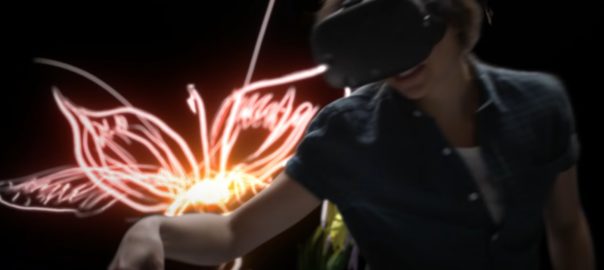I first started blogging about the metaverse 15 years ago. Back then it was speculation about the adoption “stickiness” of Second Life, by Linden Labs. Much has changed, as evidenced by Mark Zuckerberg going all in — even renaming his Facebook corporation Meta, and paying the price in steeply falling stock value and frustrated employees. But there are things that have clearly not changed since Second Life’s arrival, and they suggest he’s on to something. They are listed below, with the fourth being most consequential:
- The metaverse remains bound in the temporal world — but is not spatial — as we know it in the “real world”
- The metaverse remains a reality that a group agrees to
- The metaverse is still reliant on the Network Effect for survival
- As true as it was last time with Second Life, if the metaverse catches on it will change everything
Let’s explore these one at a time.
1. Be Here Now, But Here Is Up To Us
With a hat tip to Ram Dass, I used his famous book title to remind you of the IRL world we call home. In the metaverse, the “now” is still immutable. Time cannot be changed. But the “here?” Negotiable!
Think about if you’ve ever passed a note in a classroom. And about the texts you’ve exchanged there as well.
The note is both spatial and temporal. It’s written on a 3D object (paper) and when you pass it to me, you see my reaction in real time, the temporal part of the temporal / spatial here and now.
A text from your cell phone to mine? You still see my reaction in real time, but the note only exists in a device.
This is the world of both Linden Lab’s metaverse and Mark Zuckerberg’s. One small difference is the blurring of the metaverse with Augmented Reality (AR). Unlike Virtual Reality (VR), mediated by a device such as Oculus, with AR aspects of the metaverse can be overlayed on the place you are viewing from, and the view through which you are experiencing in that device.
The metaverse in AR can play with our spatial experience. Which is pretty cool.
But let’s return to pure VR for a moment. What place does a VR headset take us?
2. Agreed-upon Real Estate
Robert Frost, in his poem Mending Wall, reminded us that, “Good fences make good neighbours.” Don’t believe him? Wherever you’re living now, please don’t contemplate strolling into your neighbor’s house or apartment unless invited. It won’t go well.
Why does this matter? The real estate in the metaverse is manufactured, and theoretically unbounded by physics.
My metaverse can be different from yours. But unless I’m throwing an insanely popular house party in mine, you’ll find my metaverse a pretty boring place (and frankly so will I). The temptation, in both Zuckerberg’s metaverse and Linden Lab’s, is not to leave things to chance. Instead, rely on real estate developers who know what they’re doing.
I can put on my VR goggles and meet in a really popular neighborhood, knowing I’ll have a good time and even find value in the acquaintances I make. It’s a neighborhood manufactured by an enterprise who will benefit from me and many others congregating there.
That’s why even in the early 00s, brands wanted to get in on the action. A manufactured place is not a stretch for a brand.
Debbie Millman, author, teacher and strategist, said that “branding [is a] process of manufacturing meaning.” It stands to reason: Why not keep manufacturing, and create a space consistent with your brand where people can deepen their feelings about it in an expansive and curated communal space?
3. Avoiding the Sound of One Hand Clapping
Zuckerberg has certainly studied the stumbles of Linden Labs and others. He has seen the hazard of a metaverse no one wants to occupy.
The failure to launch of Second Life, in a way where many still ask, “Second what?!?,” is due to the Network Effect. This effect was first observed when our world was mostly analog. I recall it being explained in the context of fax machine ownership. (Yes, I’m an Old):
A single fax machine is useless. A second fax machine has utility between the two owners. But with each incremental fax machine bought and used, their cumulative value grows.
This effect also dictates the survival of a given social network. And ultimately, the metaverse is a social network.
The jury is out if Zuckerberg’s gamble will pay off. But unlike Linden Labs, this gamble is extremely well-funded. And if it does …
That’s my last point, which was as true then as it is now:
4. Technological Change Is Not Additive
The subhead, “Technological change is not additive,” is from author and media theorist Neil Postman, and he elaborates, “[the change] is ecological.” It changes everything.
Everything.
We’ve already seen how Facebook’s current platforms have changed our world. Its politics. Its boundaries. Arguably even its collective levels of happiness and anxiety.
So those four things are what has not changed in one-and-a-half decades. What has changed? A lot, actually.
Ownership, yes. But also bandwidth and access
Web 3.0 has been touted as the advent of ownership, an addition to the read and write features that define the Web 2.0 world in which we currently live.
It’s true.
With blockchain, there are immutable records of ownership, decentralized and out of the control of governments and power brokers. This means, unlike in Second Life, in a modern metaverse you can stake a claim on a space or a possession that cannot be “claim-jumped.” Introducing NFTs.
NFTs are built on the blockchain, and although their value volatility presages a burst bubble, ownership of them can never be disputed. Completely independent a physical, notarized deed, or some institution with a finger in the ownership pie saying it is so, the NFT you buy today will still be indisputably yours a year from now — even if its value falls to less than that of a mint condition Beanie Baby.
That’s a huge benefit of the modern metaverse.
Right now NFTs have been primarily used for art. File away this thought: Wherever artist travel, brands are sure to follow. But I’m getting ahead of myself. There are two other major changes with Web 3.0.
Let’s not underestimate the advent of 5G, and other new ways to move electrons. The speed of 5G makes it built for immediacy. When you and I pass a virtual note, the “now” I experience is as close to your “now” as physics can currently satisfy. That’s important in the metaverse, because, you’ll recall, time is the glue binding all of us to a shared metaverse experience.
The same wider pipes deliver a more detailed experience. On the urging of a colleague, I finally watched the film Ready Player One, and once I saw it I understood why. The metaverse of that story was vivid and inviting. And with haptic wearables, extremely visceral.
Which leads to access. Second Life, at least in its early incarnations, required downloading an app on a desktop or laptop computer. With Meta, all it will take is a headset. And Mr. Zuckerberg wants you to own one.
The Devices To Overshadow Our Cell Phones
“The next cell phone” is how this Economist piece described the AR and VR headsets that are being frantically manufactured by Google, Meta and others. The numbers projected there are breathtaking. This is different from the Linden Labs days, when there was no hardware push to match the software they developed.
And there are already eager device buyers. My old employer, Accenture, just announced they’re buying 60,000 Oculus VR devices. Will this and other investments be enough to achieve Network Effect velocity? Time will tell.
But what if it does? Here is the use case I mentioned in the headline.
Superbowl Sunday, 2025
Scarcity is built right into Superbowl Sunday, the intellectual property owned by one of the most powerful brands in the world: the National Football League. This scarcity accounts for the insanely high prices for tickets to those games. With the metaverse, the in-person prices would continue to be stratospheric, but there would be another way to attend, and another price structure associated with it.
Imagine a game where those in the stands can watch the game, but much improved, through AR glasses. Statistics could flash, and replays would be on demand with the utterance of a voice command.
In addition, those who pay enough can be there as well, but from anywhere else in the world, by wearing VR goggles. They’d have an even more virtual way to watch the same time-bound plays and replays.
But in this humble use case, the real metaverse magic happens during half time.
In a way, the half time show we saw this February was close to an AR experience. Like other recent years, there was a miracle taking place, in real time, on that vacated playing field.
While the two teams were in their respective locker rooms, a miracle of logistics, LED lighting, and smoke machines transformed the square yardage of competition into a world designed for entertainment.
There was a multi-floor set, made of scaffolding but dressed to look like something else, that featured a half dozen hip hop elders, including an upside-down 50 Cent. Amazing.
Another recent year featured Lady Gaga atop a crane, surrounded by intricately choreographed light-emitting drones. Again, amazing, made more so by the extremely high stakes of getting the show off the stage once the music ends.
This time-bound event (everything erected must be off the field before the second half can start!) is ready-made for AR / VR sorcery.
Enter Google Tilt and Dozens of Sculptors
What if, in 2025, the rigging that showcases the singers and dancers was far simpler, and the other world that is conjured is created in a metaverse? And what if we get to see that world be sculpted, one sweeping plane of light at a time?
Imagine half time has just started, and everyone in the stands sees an assembly taking place through their AR glasses. The set for the musicians and dancers is constructed over and around pipes and stage planks, by real artists on the field, using virtual light they have mastered.
We see those sculpting talents through something like Google Tilt. Remember when I said brands aren’t far behind when artists step in, to create, and enthrall us? Well naturally, these half time artists would be heavily sponsored.
“Google Tilt?” you ask. Instead of me describing it, allow me to show you this:
The half time set creation dazzles the audience watching in the stands, but also the additional paid attendees using VR.
As for the rest of us? Technology isn’t additive, you’ll recall. It changes everything. We’d still be watching on a television, so we wouldn’t be able to see the performance in 3D, like others. But we would see the same amazing set that adorns the singers and dancers.
As an added bonus, at the end of the show, AV and VR attendees would get a chance to win the unique and heavily branded work of these artists. As the stage is struck, in readiness for the second half of play, the sculptures comprising the stage set would be distributed to the audience, either by lottery or highest bidder, as NFTs.
If you win a sculpture, you’d get to “take home” an actual piece of the Super Bowl show, to show off and cherish. Instead of getting a tee-shirt shot from an air gun, you’d win a beautiful, one-of-a-kind art piece for all to see and admire.
The catch? It only exists in the metaverse.

